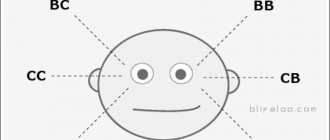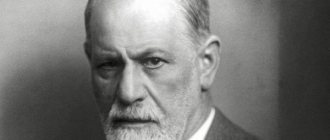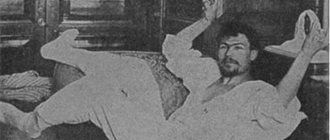The Function of Gaze: Cultural and Historical Significance in Society
The manner of looking is of great importance during communication. But representatives of different cultures have their own etiquette regarding the permissibility and appropriateness of direct eye contact. Thus, in Western European countries it is customary to look long and intently, expressing trust and interest in the conversation. A similar tradition is common in Russia and other CIS countries.
Residents of the Far East regard an attempt to make eye contact as disrespect and even a threat. This is especially pronounced in Japan: during a conversation, the Japanese specifically look to the side so as not to accidentally look at the interlocutor. When studying the culture of views, one should take into account national characteristics, otherwise one can misjudge intentions and provoke a quarrel.
Eye contact: gender and cross-cultural differences
Eye contact is especially important for initiating social relationships. This behavior has gender differences and is more significant for women.
As observations show, men rarely decide to start communicating with women if this is not preceded by a look from their side. This look can take the form of direct open eye contact, or a shy gaze. In the latter case, the contact lasts about a second, then quickly moves to the side (this action is accompanied by a slight smile and a slight blush, often while the woman again looks sideways at her partner).
His social success largely depends on how skillfully a person uses his gaze. Experiments show that with the help of gaze you can improve relationships with other people. To do this, when communicating, you need to make eye contact with this person at least 60-70% of the time. Recommendations of this kind are not applicable in all cases. Great difficulties arise when representatives of distant cultures come into contact.
Low-contact and high-contact crops
Significant cross-cultural differences regarding the role of gaze in social communication and its expressiveness can be traced between low-contact and high-contact cultures.
Residents of the southern part of Europe are characterized by a high frequency and usually longer duration of gaze compared to the northern part. As a result, such natural, from the point of view of Italians or Spaniards, behavior as direct looking into the eyes of the interlocutor or simply openly examining others, when contacting the British or northern Germans, is often regarded as an insult. Although in some cases among northern Europeans (Swedes, Danes), with a low frequency of gaze, its duration can be very high.
Misunderstandings associated with different ideas about the permissibility of gaze are also common when communicating between representatives of high-contact cultures. The gaze, for example, plays an extremely significant role in the lives of Russians and Japanese. However, for Russians, it is the expressive gaze as such that speaks, while for the Japanese the main burden falls on avoiding the gaze.
Japanese etiquette
prohibits looking into the eyes of the interlocutor when communicating. This is one of the important rules of behavior in Japan.
Women don't look men in the eyes, and vice versa. Japanese lecturers do not look at the audience, but somewhere to the side. A subordinate receiving a reprimand from his boss looks down and smiles. When communicating, the Japanese, as a rule, direct their gaze to the neck area, which causes Europeans to feel a lack of contact with the interlocutor. In turn, eye contact from Europeans in the direction of the interlocutor is almost intolerable to the Japanese.
Differences between American and English cultures.
By the nature of eye contact:
Americans look into the eyes of the interlocutor only to make sure that he is listening to them. For similar purposes, the British look into the face of their interlocutor, blinking periodically.
In Russia
a close look in the direction of the speaker is a sign of good manners and upbringing. However, Russians look at their partner longer and more directly than the British, therefore, when they get to England and follow the traditions of their native culture, they risk finding themselves in an awkward position.
In the culture of the peoples of the Far East
a straightened back when sitting and a slightly tilted head with closed eyes means close attention and deep interest in what the interlocutor is saying.
A European lecturer who is not prepared for this can experience deep stress at the sight of such a completely detached, from the point of view of European standards, student audience. In many hierarchically rigidly structured societies, people with low status are prohibited from raising their eyes to their superiors (countries of Western Asia).
What does the size of the pupils indicate: what is the interlocutor hiding?
During a conversation, the size of the pupils may change dramatically. This is due to the emotional attitude towards the interlocutor or the subject of conversation. Dilated pupils are a sign of strong emotional upsurge: the partner is looking at what he likes. This is how lovers look at the object of their passion or children look at a desired toy. Constricted pupils are a sign of detachment and emotional coldness.
When assessing pupil size, it is important to take into account third-party factors. So, in bright light, the pupils narrow greatly, and in semi-darkness they dilate. Some diseases, for example, increased intracranial pressure, can affect the width of the pupils.
Communication nonverbal communication
Placebo effect - what is it in psychology
Nonverbal means of communication are a system of signs that complement, enhance or replace speech:
- Akulesika. Messages are conveyed through glances. They depend on the frequency and duration, intensity of contact (closely or sliding). The gaze reduces psychological distance or is perceived as a threat.
- Kinesics. Combines looks, facial expressions, postures, gestures, movements of sociocultural and physiological origin.
- Tactile behavior. The communication method is based on touch (ritual, love, professional, friendly) to strengthen or weaken communication processes.
- Chronemics. Use of time in nonverbal communication. For example, in the United States being late is considered disrespectful, but in Latin America this situation is common.
- Proxemics. Relationships are built taking into account distances and territorial locations.
- Sensory. The attitude towards an individual is based on perception by the senses (sensation of sound, taste, warmth of the interlocutor).
- Paraverbal communication is determined by vocal timbre, rhythm, and intonation when transmitting information.
Important! Specialists in nonverbal psychology combine the listed types of communication into various forms of information transmission: sign-symbolic, optical-kinetic, tactical and phonation (sound).
Gaze frequency and duration: how to understand signals
The duration of looking at a partner within European culture has different meanings, depending on the nature of communication. The following types of views are distinguished:
- Social - medium duration, aimed at the eye or mouth area.
- Business - direct, long-lasting, expresses the desire to reach an agreement.
- Intimate - intermittent for women, long-lasting for men. Used to attract the attention of an interested person.
A direct gaze directed downwards at a partner is a signal of threat, a warning of an attack. This is how dominant individuals look, seeking to assert their position. In friendly and business communication, a challenging gaze should be avoided so as not to accidentally provoke aggression.
It is believed that the eyes do not lie
No matter how much a person wants to hide his true intentions, one look into the eyes is enough to sense something is wrong or even guess everything at once. Thus, a man’s gaze into a woman’s eyes during silence is most often a sign of sympathy. On the other hand, understanding the “language of views” at an elementary level can already make life easier for anyone and in any field of activity. Incredibly, visual contact is as valuable a tool of non-verbal communication as body language and facial expressions.
At first glance, it may seem that the “language of views” is limited in possibilities, but in practice it can be much more expressive than words.
The look may:
- Instilling trust is the secret weapon of businessmen, actors, diplomats, negotiators and politicians;
- To inspire desire - the image of a femme fatale always begins with a stunning look;
- To subordinate - the boss’s imperious gaze is stronger than any words, every subordinate knows about this;
- Provoke - a clash of views during a meeting often becomes the starting point for a quarrel: “What are you staring at?”
A long gaze at your interlocutor has a special power of influence; it is difficult not to notice and impossible to ignore. If a person looks at you intently and does not look away, he needs something, and he is not afraid to show it. But how to interpret gaze into the eyes is almost always an open question.
How to master basic acting and public speaking skills?
Answer 4 short questions and we will select the optimal curriculum
Take the test
What does winking with one or two eyes mean, frequency and speed of blinking
Winking during business communication is unacceptable. This is an informal gesture that is only allowed by people in informal relationships. A wink is a signal to the interlocutor that an agreement has been reached, encouragement, and assurance of one’s support. In Asian culture, winking is a form of insult.
The frequency of blinking speaks about character: frequent blinking indicates uncertainty, a tendency to submit, rare blinking indicates self-confidence, arrogance. Before assessing the blink rate, you should find out whether the interlocutor has vision problems. With myopia, frequent blinking is an uncontrollable symptom that is important to consider.
What does a woman's gaze mean?
A woman tends to stare intently at a man she likes, so for a man such a look is a good sign and a call to action. Even more often, such looks are found among women in love who simply adore looking into the eyes of their significant other. According to women, this is a special sacrament, communication without words, spiritual intimacy, etc. A woman will definitely not stare at everyone, because it is modesty that adorns the weaker sex, and intrusive glances do not go well with modesty.
It is also not customary to look closely at other women, unless this is an obvious conflict situation, or there is an objective need for such behavior.
A long examining and comparing look is possible, but not eye to eye. The emotions from the gaze of another woman are approximately the same as from the gaze of a man on a man:
- Anxiety and feeling of danger;
- Feeling of discomfort;
- Irritation.
A woman's long gaze at a man is an obvious sign of sympathy.
Especially if we are talking about direct eye to eye gaze - it means that the woman is interested in you as an interlocutor, and besides, she is self-confident and straightforward.
If a woman looks at her interlocutor with a squinted eye, this can mean mistrust, and sometimes even deceit: the person wants to know about your plans and at the same time hide his own.
A wandering gaze indicates that a person is interested in everything that surrounds him, or vice versa - he is not interested in anything specific.
The wide-eyed look is often used by salespeople, as well as professional actors, because it inspires confidence.
Lovers look at each other eye to eye, this look symbolizes passion and desire to be together, not to lose sight of your other half for a second.
Direction of gaze: what the interlocutor is thinking about
The position of the eyes during a conversation reveals the intentions of the interlocutor and the degree of truthfulness. If the eyes are directed:
- up to the left - the partner recalls events that actually happened;
- up to the right - an attempt to imagine the subject of conversation, in reality it does not exist;
- to the left - an attempt to remember auditory information received earlier;
- to the right - the interlocutor is lying, trying to invent non-existent memories;
- down - the interlocutor is focused on thoughts, conducting an internal monologue.
This feature is suitable for right-handed people. When talking to left-handers, you should evaluate the meaning of direction in reverse.
Smile as a universal and culturally specific signal
Research by ethologists indicates the universality of the human smile.
In 1862, the French neuroanatomist Duchenne de Bologne noted that a smile of pleasure (a smile in its primary context) differs in appearance from an intentional smile in the nature of the contractions of two facial muscles:
- zygomatic major
- periorbital (orbicularis oculi).
The first pulls the corners of the mouth upward. The second one pulls the skin from the cheekbones and forehead towards the eyeball. The zygomaticus major muscle is subject to controlled actions. Periocular - acts automatically, on a subconscious level and reflects true emotions.
Therefore, as Duchesne de Bologne rightly believed, a true smile is almost impossible to fake.
There are many types of smiles. The meanings of a smile can be different:
A smile of pleasure is associated with pleasant emotions, joy and relaxation.
Other types:
- variants of a fake smile, the purpose of which is to confuse the interlocutor (demonstration of an attitude that is absent in reality),
- submissive smile,
- smile of fear,
- smile of embarrassment.
How to decipher the way you look at your interlocutor during a business meeting or date
During a business conversation, you should correctly evaluate the visual signals of your interlocutor. A long, direct gaze reveals a domineering nature, a desire to subjugate interlocutors. It can only be allowed by a superior in the direction of a subordinate. Downcast eyes (especially in combination with a bowed head) are a symbol of submission. Between equal partners, it is acceptable to exchange short, friendly glances to complement communication.
During a romantic date, a man looks at a woman hidden: direct looking is regarded as a threat. The male gaze is defiant, so he can only respond to a woman’s attention, but not directly show interest. For romantic communication, a woman is the initiator. She can openly look at the man she likes, inviting him to get acquainted. It is acceptable for a woman to look directly and defiantly - this is not a threat, but interest.
Face search
Now let's use the clmtrackr.js library to find a face in a video.
First, let's initialize the face tracking system by adding the following code after const video = ...: const ctrack = new clm.tracker(); ctrack.init(); Now, in the onStreaming() function, we connect the face search system by adding the following command there: ctrack.start(video); That's all we need. Now the system will be able to recognize a face in a video stream. Don't believe me? Let’s draw a “mask” around the face to make sure of this. In order to do this, we need to display the image on top of the element responsible for displaying the video. You can draw anything on HTML pages using the tag
. Therefore, we will create such an element, overlaying it on the element that displays the video. The following code will help us with this, which must be added to the HTML file under the element already there: #webcam, #overlay { position: absolute; top: 0; left: 0; } If you want, you can move the inline style to a separate CSS file.
Here we have added an element to the page
the same size as the element. The styles used here ensure that the elements will be placed in the same position.
Now, every time the browser displays another frame of the video, we are going to draw something on the element
. Executing some code on each frame is done using the requestAnimationLoop() mechanism. Before we output anything to the element, we need to remove what was previously on it by clearing it. We can then tell clmtrackr to render the graphics directly to the element.
Here is the code that implements what we just talked about. You need to add it below the ctrack.init() command:
const overlay = $('#overlay')[0]; const overlayCC = overlay.getContext('2d'); function trackingLoop() { // Let's check if a face is detected in the video stream, // and if so, start tracking it. requestAnimationFrame(trackingLoop); let currentPosition = ctrack.getCurrentPosition(); overlayCC.clearRect(0, 0, 400, 300); if (currentPosition) { ctrack.draw(overlay); } } Now let's call the trackingLoop() function in the onStreaming() function immediately after ctrack.start(). This function will schedule its own restart every frame.
Refresh the page and look into the webcam. You should see a green "mask" around the face in the video window. Sometimes in order for the system to correctly recognize a face, you need to move your head a little in the frame.
Face recognition results
How to determine character traits by the way you look at your interlocutor
When studying the features of the psychological designation of gaze, the direction and duration should be assessed comprehensively. Thanks to this, you can draw up an approximate psychological portrait of your partner and notice a lie in time.
A person with a strong leadership character reveals a top-down view: he evaluates the interlocutor, “presses” with his gaze. Often high-ranking officials look at their subordinates with narrowed eyes. They have one eyebrow raised, their forehead wrinkled. This facial expression speaks of ambition, neglect, hostility. When a leader wants to break the will of his interlocutor, he looks for an exaggeratedly long time, using his gaze as a means of psychological pressure.
Cunning, adventurous people look straight, lifting their chin slightly. The gaze glides over the figure of the interlocutor, without lingering on the details. Such an interlocutor does not avoid direct gaze, but does not look into the eyes, but at the point between the eyes.
Individuals focused on the inner world look above the interlocutor. The direction of the pupils changes chaotically - as if they don’t know where to look. Often such avoidance of gaze is perceived as secrecy, but this is a manifestation of schizoid accentuation, a personal characteristic of the individual.
Looking up at your interlocutor is a symbol of humility and helpfulness. Shifting eyes - internal fear, a feeling of threat, anticipation of an attack. Sometimes lovers look this way, trying to hide their feelings.
V. L. Golubev
The phenomenon of “eye to eye” communication (psychological and linguistic aspects)//Human physicality: interdisciplinary.
research // Philosophy. about the USSR. – M., – 1991. – P. 65 – 70. Since the human face is “a kind of center for the transmission and reception of social signals” (K. Izard), the enduring interest of researchers in the psychological aspects of expressive behavior in general and facial expressions in particular is understandable. Facial expression is a very complex phenomenon in its structure. It includes the physiognomic components of the face, the so-called basic emotional expressions, as well as various voluntary movements in the face that accompany speech during communication. In addition, facial expressions provide a large number of mixed and difficult to verbalize feelings, the so-called “role masks” (“display rules”) and other types of expressions. It was possible to study in detail the facial pattern of only basic emotions (according to Ekman, there are 6 of them; according to Izard’s concept, there are 9 of them). However, beyond these 9 emotional states (pleasure - joy, interest - excitement, anger - rage, disdain - contempt, surprise - fear, shame - timidity - humiliation, fear - horror) a facial behavior in all the diversity of its expressive halftones, nuances and The dynamic “game” of feelings remains a difficult object of scientific research. The above fully applies to “eye to eye” communication.
The importance of the physiognomic image of the face (that is, the image of the face without facial movements in it) and its individual elements (eyebrows, eyes, nose, mouth, etc.) is most clearly shown in countless examples of portraiture and the art of makeup. Mimic expression, superimposed on the physiognomic image, gives rise to that individual image that is inherent in the face of each person and makes him different from other people . to the experimental study of the “language of facial expressions ” and its perception. Their analysis is not the purpose of this article. Here we will limit ourselves to considering a peculiar paradox discovered in the study of “eye to eye” communication. This paradox concerns the expression of the eyes. Everyday universal human experience, enshrined in works of art and folk wisdom, suggests that the most expressive thing in the human face is the eyes. Suffice it to recall numerous sayings and phraseological units: “The eyes are the mirror of the soul”, “read the soul in the eyes”, “shoot with the eyes”, “make eyes”, “eat with the eyes”, “sparkle with the eyes”, “clap with the eyes”, “make big eyes” " etc. The interlocutor's gaze complements what is unsaid in words and gestures and sometimes gives true meaning to the spoken phrase. An expressive look is capable of comprehensively conveying the meaning of not only what is said, but also what is unsaid and unspoken (subtext). Sometimes the look is such that it makes all words unnecessary. In general, looking “eye to eye” is always the most important signal of nonverbal communication . Even in a moving oncoming crowd, a silent and brief exchange of glances with a stranger captures the moment of communication.
These widespread empirical ideas about the special expressiveness of the eyes are contradicted by many experimental data, according to which the identification of emotions on the face is carried out more successfully when analyzing the expression of the mouth rather than the eyes. A review of these works is presented in the monograph by P. Fresse and J. Piaget (1975). According to T.N. Malkova (1981), when perceiving the face of another person, the leading or greatest significance for the observer are the signs localized in the lower part of the face and in the area of the eyebrows and forehead. In his dissertation research, the author comes to the conclusion that changes in the lower part of the face , then in the forehead and eyebrows, and least accurately - changes in the eye area. Thus revealed, the contradiction between experimental data and empirical experience is not accidental and requires its own explanation and resolution. Various reasons for this contradiction can be suggested. It is well known that the oral region has many small muscles and can voluntarily move in almost any direction. At the same time, the eyebrows are controlled by a minimal number of muscles and can only move up, down and towards each other. Apparently, more successful recognition of changes in the lower part of the face concerns mainly voluntary movements in this region of the face. We believe that natural facial expression , carried out automatically and unconsciously, due to its complexity, is more difficult for experimental research. This is especially true for eye expression; the latter does not lend itself to unambiguous interpretation or any formalization.
At the same time, the exchange of views initiates and maintains communication at all its stages; its significance especially increases with confidential “eye to eye” communication . At the same time, meeting the eyes establishes a connection between two people, it opens up the possibility of psychological rapprochement. The personality space of one is in contact with the personality space of the other. They find themselves, as it were, in a single field of potential spiritual communication. This field is open in its perspective and knows no psychological boundaries. Therefore, observing the eyes of another from the outside and direct eye contact gives rise to different sensations and experiences in a person. We are not afraid to say that in the eyes of another the mystery of the incomprehensible is always revealed, connected with the mystery of the living in general, with the mystery of the living soul of another. It is known that the process of a person’s dying is accompanied by a number of objectively observable signs, on the basis of which the doctor declares death (cardiac arrest and respiration, change in color of the skin and mucous membranes, etc.). However, the eyes undergo the most expressive changes. These changes in the eyes cannot be explained by the drying of the mucous membranes due to the instantaneousness of their transformation, as well as by an unfixed gaze, etc. An experienced doctor determines death by looking into the eyes of the deceased. When dying, the eyes cease to be a “living” place on the face. In them “the light of the living soul goes out.” Thus, the gaze, as an act of non-verbal communication, is a tool or a kind of channel that supports the spiritual communication of people. Note that even animals (for example, dogs) that carry out or listen to a human command do not look at the mouth from which the sounds of speech come, but into the eyes of the owner.
The data presented above suggests that the mechanisms of perception of the eyes of another person must have some differences from the perception of other parts of the face . This assumption is confirmed by the sphere of language in folklore, poetry and fiction in general, which is an objectified layer of human consciousness, communication and culture. We turned to V.I. Dahl's dictionary, which, in addition to 200 thousand words, contains 30 thousand proverbs, sayings, proverbs and riddles and is therefore a completely representative source of language in the Russian ethnos. When counting the number of proverbs, idiomatic phrases and metaphors characterizing a person’s face (the following were taken as keywords - eyebrows, eyes, zenks, eyes, gaze, lips, mouth, tongue, cheeks, forehead, nose, ears), it turned out that with them Over 400 corresponding phraseological units are associated. Among them, 36.3% had the keyword “eyes” (“eyes”, “look”); 28.4% - associated with the mouth area; 2.1% with the eyebrow area; 6.4% forehead; 2.3% – nose; and 15.5% - ears. Having received such results, we further tried to answer the following 2 questions: 1) does the percentage of phraseological units for each area of the face reflect their share in the act of communication? and 2) does the meaning of phraseological units reflect the nature of this communication?
An analysis of the collected material showed that an unexpectedly high percentage of such keywords as “nose” and “ears” (more than 100 phraseological units) is explained by the predominance of humorous statements in them. It was previously noted that motionless or scarcely moving parts of the face, weakly involved in facial expression , often serve as the object of humorous remarks and jokes. Therefore, these phraseological units rather reflect the way human culture assimilates facial features of little significance for communication in folk art: “flap your ears”, “neither ear nor snout”, “he doesn’t see this as his own ears”, “remained with his nose”, “turn up nose”, “lead by the nose”, etc.). At the same time, the percentage of phraseological units in which keywords are associated with other parts of the face quite often corresponds to experimental data on the degree of their participation in the act of communication. In particular, the largest number of phraseological units relate to the area of the eyes and mouth (almost 65%). However, the maximum number of phraseological units is characteristic of the keyword “eyes” (36.3%), which thus confirms the above-mentioned data from empirical communication experience, but not the results of an experimental study of facial expressions . An analysis of the meaning of these phraseological units clearly shows that statements with a communicative meaning predominate among them: “he will look and he will give you a ruble”, “a reproachful look”, “languid look”, “unclean look”, “unkind look”, “shameless eyes”, “ envious eyes”, “staring eyes”, “hiding eyes”, “casting a glance”, “eyes flared up”, “out of the corner of the eye”, “drinking eyes”, etc. It can be seen that these phraseological units (in contrast to the theme of “nose” and “ears”) clearly correlate with the ability of the eyes to actively participate in facial expression.
A person’s face often acquires a stable characteristic expression (angry, sad, good-natured, cheerful, etc.). Many parts of the face take part in the formation of this impression, but the semantic center of the perceived image is always the eyes. The totality of the presented data allows us to say that the eyes are a kind of channel for transmitting, receiving and exchanging semantic information related to the spiritual sphere of a person. Eye expression is always a significant sign for another person , “eye to eye” communication always sets partners up for emotionally rich contact, the effect of “eye to eye” communication provides not only purely visual functions, it is also a tool for regulating mutual understanding. It is enough, for example, to point out such a series of words as “eye” – fraud – charm”, etc. to see this real function of “eye to eye” communication . This is also evidenced by a lot of other word formations and phrases (“the light of your eyes has gone out”, “radiant”, “extinguished gaze”, “evil eye”, “fill your eyes”, etc.). Eyes are a kind of connecting element of spirituality and physicality. The Bible says, “The eye is your lamp. So, if your eye is clean, your whole body will be bright. If your eye is evil, then your whole body will be dark” (Gospel of Matthew, chapter 6. Sermon on the Mount, No. 22 and 23). The expression of the eyes, like all human spirituality, is ultimately intended for another person. “The soul is the gift of my spirit to another” (M.M. Bakhtin, 1986). We can also say that looking “eye to eye” is a non-verbal call for understanding, it is an existential expression of hope for overcoming misunderstanding, for overcoming loneliness, it is the language of the soul, addressed to the soul of another. One of the phraseological units in V. Dahl’s dictionary says: “the eyes speak, the eyes listen.” This communicative function of the eyes in a person’s emotional communication was well understood by the author of the mentioned dictionary when he wrote that “a look is the expression of the eyes, as a silent, but the highest speech of a person.”
Therefore, we are unlikely to be mistaken when we say that the eyes are truly the most expressive part of the face . Expressive not only in the sense of the possibility of expression, but also in the sense of the significance of this expression for the communication process. It is not surprising that the eyes are also characterized by maximum physiognomic expressiveness. It is provided, apparently, by the projective mechanism of perception. To feel the spirituality of another, you need to look into his eyes. Therefore, the eyes of another are always attractive. It has been shown that more than 50% of the time a person communicates, he looks into the eyes of his interlocutor. When looking at a portrait, the viewer also spends most of the time looking into the eyes of the person depicted. Therefore, not only a good portrait is beautiful, but also the faces of the spectators looking at it, just as beautiful is the very moment of silent spiritual communication between a person and a person. The difficulties and contradictions faced by researchers of eye expression are explained by the impossibility of its formalization and the large proportion of projective mechanisms in its perception.











